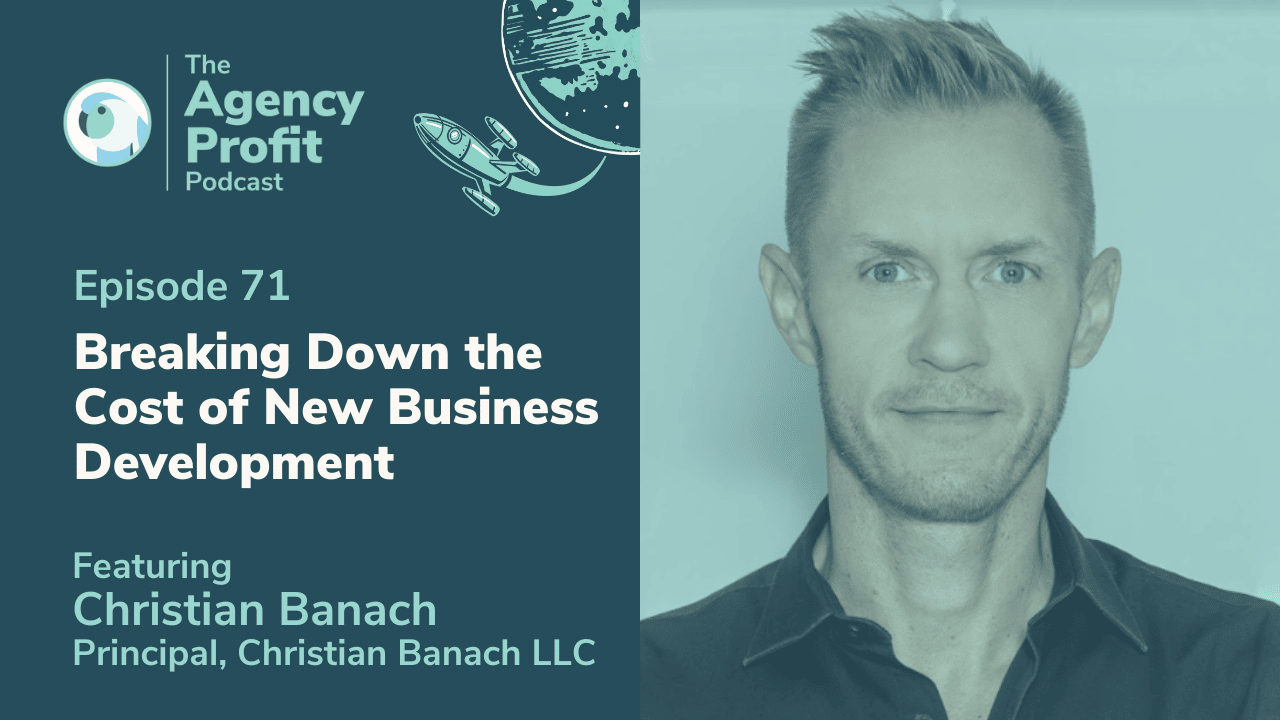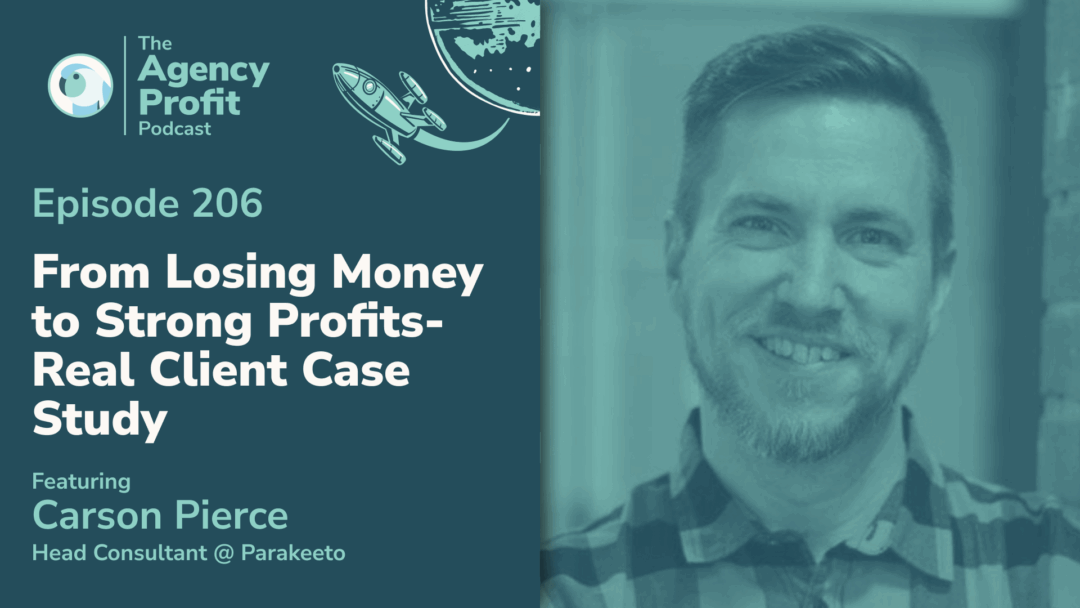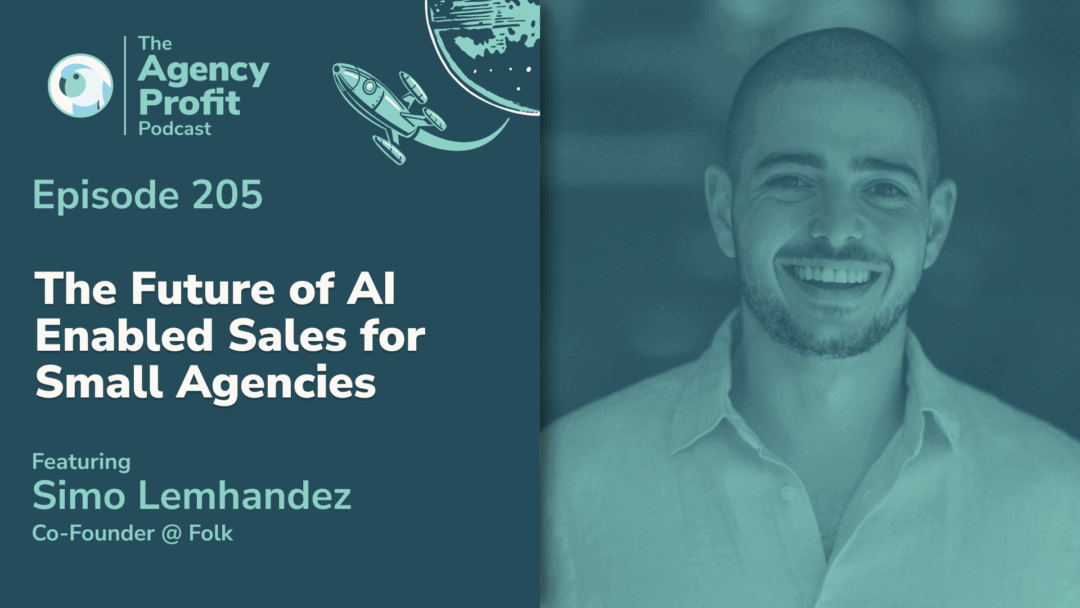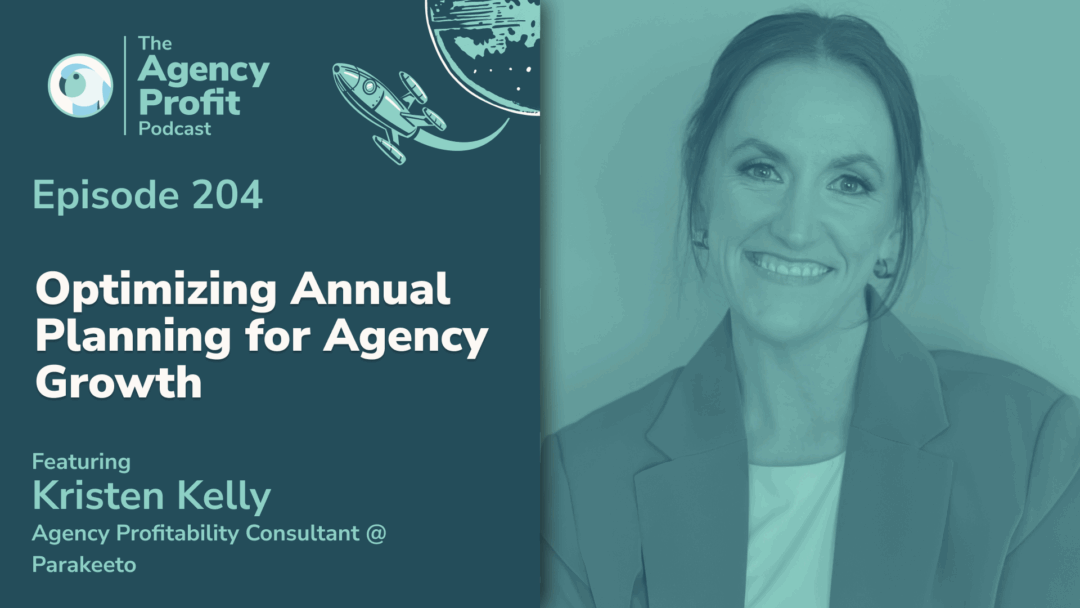Welcome back! This week, we discuss how agencies are using outbound business development to rebound and/or accelerate their growth.
About Christian Banach…
Christian Banach is a business development and growth consultancy company that helps advertising and marketing agencies land 6/7-figure opportunities predictably.
Clients – including BBDO, Jack Morton, Vice Media, and Barkley – come to him to get more right-fit opportunities, thus bypassing the expensive and time-consuming RFP process, plus win even bigger deals!
Through his consulting and outbound lead generation services, Christian’s clients build relationships with C-Suite/VP decision-makers at the world’s leading brands. He does this by using his PROPEL™ account-based sales process.
When Christian isn’t working his brand of magic for clients, you can find him staying fit and active, or chasing the Chicago Cubs around the country!
Points of Interest…
- How Christian Banach Helps New Business Development 1:55
- The Economics of Your Sales Process 4:51
- Navigating New Business Developments 7:52
- Managing New Business Development Outreach 12:51
- Financial Benchmarks for In-House Outreach Processes 17:33
Bringing Predictability to New Business Development
We’ve talked ad nauseam on the show about why it’s important to always have a full pipeline. It’s a great place to be from an operations and profitability perspective, but we haven’t really dug into the numbers behind it. Before we tackle that particular topic, I ask Christian to outline – in his own words – what he does at his business development and growth consultancy company.
“Christian Banach is my company, and we work with advertising agencies and marketing services companies. Our value proposition is really helping them land six and seven figure opportunities, predictably. And what we find is that most agencies are relying on word-of-mouth, referrals, plus some sort of inbound RFPs. That, however, is not predictable…”
Indeed; you don’t necessarily know when they’re going to come in, or who they’re going to come in for. The good people at Christian Banach believe there’s a better way to go about generating new business while landing your preferred clients – with the necessary level of predictability required to bolster a healthy pipeline.
***Christian expands on what led him to start doing this for multiple agencies from the 2:48 minute mark. Yes, you guessed it, he (like all successful business owners) stumbled into his current profession – by way of Lady Gaga and Mr. WorldWide himself, Pitbull…***
The Economics of Your Sales Process
It’s important to have a Sales Process that works, but equally essential to have one that is efficient. When we go from word-of-mouth referrals, the subsequent rung of the ladder is then Request For Proposals, right?
Let’s break down what it means to respond to an RFP; some of the costs that we might not be considering; then go into that process before measuring what it’s actually costing us to go through that RFP process. After all, in Christian’s experience, such “opportunities” don’t always add up…
“I think a lot of agencies default to RFP. However, we find it’s a challenge; there’s a lot of cattle calls, if you will, where 20 people/agencies might be responding to one of those calls. And, sometimes, we find that these opportunities are rigged… the winner has already been determined before that RFP ever really hits the market.”
Now, does that sound like something you’d choose to spend anywhere from $10k – $200k on, between labor and hard costs?! When you’re playing an odds game – where you might only be winning 10, 20, 30% – you can do math. Don’t be surprised to learn that you’re spending in the region of several hundred thousand dollars responding to RFPs in any given year.
At the risk of turning this episode into an RFP defecation fest; it’s worth noting that such work also tends not to be the most profitable or well-scoped. True, there’s an argument to be had regarding the backend, which tends to go a little something like: “Well, it’s fine that we spend a hundred thousand dollars to win a million-dollar RFP.” However, if your margin on that is going to be 10% at the end of the day, maybe it’s not okay.
Navigating New Business Development
Where do the majority of costs come from in that process? What are the main culprits driving up the price? More importantly; how can you start to bring that cost down – or get ourselves outside of the RFP process space altogether? In Christian’s experience…
“The biggest cost is our time. You can allocate or figure out how many individuals you have on your team participating in the development of that RFP. From the strategy and research to the actual pitch writing and presentation – it adds up pretty quickly. It’s not usually one individual putting all of it together.”
Depending on how deep you want to go in any RFP response, additional costs will be incurred. For example; you may need to reach out to contractors if you’re strapped in certain areas, or perhaps some proprietary research is required.
At this point, you could be asking yourself a number of questions, like, ‘Is the time spent responding to this RFP (that you have a very low chance of winning) even worth it? In the unlikely event of winning, what is the margin on it? Are those hours better spent in other ways?
Getting Outside the RFP Process
OK, so we’re starting to become cognizant that this is really taking A LOT of our time – plus, we’re not winning. How do we start to get outside of the RFP process, perhaps becoming the agency that was “rigged” to win it in the first place? How do we position ourselves in that coveted spot?
“It’s really about trying to be more proactive in who you’re reaching out to, who you want to work with. Usually, that involves some sort of a more proactive, outbound approach. I know in the Agency world we don’t like to use the word ‘sales.’ Um, but – you know – it is sales.”
Obviously, you don’t just go knocking on anyone’s door; you need to define the following:
- What is it that you do? Define the problems or issues you are particularly good at solving.
- Pinpoint the industries/companies that are experiencing that problem.
- Proactively introduce yourself/your service by getting in front of those types of prospects.
We’re not suggesting you barrel in to close a “sale” that doesn’t necessarily exist at this point; they may not be in the market for buying your service right now – the idea is to build on that relationship. Instead of being just one of 20 agencies that were invited to win the RFP, you’re one of the 20 agencies that actually have a relationship with them. You may even know some of their pain points and what can be utilized to remedy them.
Outsourcing New Business Development Outreach
Similarly, such (albeit necessary) outreach can be time-consuming. You can choose to do that in-house, or you can choose to outsource it to a company like Christian Banach. Therefore, I ask Christian what one should be spending in order to get a contract? Are there benchmarks for what a reasonable cost of acquisition is, relative to contract size? Additionally, what are some of the decision making processes you might go through to figure out if it makes sense to try and do this in house – thus building your own outreach process – versus finding a partner like Christian, that can come in and install that for you.
“If you’re taking an outbound approach and you haven’t done it before, there’s a lot of learnings due from the first six months to a year. We do both; we advise clients that are trying to build an in-house system on their own, and we also are outsourced.”
Generally speaking, if you’re new to developing an outreach process, there needs to be some fundamentals in place in order for it to be successful. For example, you should ideally have the following at your fingertips…
- Solid knowledge of your service
- Your preferred audience defined
- Decipher your offers/pitch
- Have all your numbers/metrics figured out
If all that seems offputting, then you could avail of a consultancy firm to help you collate these necessary items before moving your outreach process in house, or even deciding upon a more hybrid approach. In short, you should weigh up the pros and cons figures wise to see which form is optimum for you. By way of a hypothetical situation, consider the below steps of moving outreach in-house…
- You could spend $125 – $130k on a Biz Dev Director’s salary
- There are taxes and benefits to consider, plus their required equipment
- Perhaps you need to hire a recruiter to find the best person for the job?
- What of the backend of proceedings, such as a database to host the contact information, plus other insights, to help you build these prospecting lists? Such providers can cost anywhere between $5k to maybe $20k.
- There are other variables, such as commissions and bonuses for your salespeople
- You’re going to need tools for CRM as a sales engagement platform.
- From a tech standpoint; probably on the low end, maybe $5k – $10k; on the medium size, perhaps $20k. Christian’s tech stack alone is probably $50k…
Point being, if you’re planning on sending one lone email a day as part of your outreach process, this won’t generate optimum results. Doing this at scale doesn’t need to be daunting, there are services to aid the process. ***Christian expands more on this and the costs/ROI involved from the 15:43 minutes***
Side note: if you’ve got a process for how you go about defining your scopes for projects, it’s best that you install a regular cadence to review and tweak these numbers based on past performance as time goes on. The Agency Profit Toolkit is a free resource that has meeting templates that you could directly apply to this, among other goodies. Grab your copy below!
Financial Benchmarks for In-House Outreach Processes
If an agency owner is currently trying to spin this up in-house, plus possibly venture down the path of hiring people, how can they assess if they’re on track to make the right kind of ROI?
“The idea here is it’s a funnel, right? You’re going to target a certain number of companies or prospects in any given month. Then, you’re going to convert a certain percentage of those into meetings. A percentage of those meetings are going to advance into opportunities, or RFPs, and a certain percentage of those are going to be closed business one. So you’re going to want to figure out those metrics and it varies agency to agency.”
Obviously, Christian and his team have worked with enough agencies and can therefore offer some general benchmarks to proceedings, based on the premise of landing $1m dollar deals.
- The number of companies that you might reach out to in any given month, maybe 15% – 20% of those are converting into a meeting – be it a workshop or a discovery call, etc.
- From there, the agencies Christian is consulting see approximately 25% percent of those calls turning into some form of opportunity.
- The beauty of this is, usually, it’s not an RFP. So, anywhere from about 50% of those opportunities that are turning into closed business one.
- Commence small, targeting approximately 20 companies a month. Then, you can start doing the math; 15 or 20 companies a month will generally get you two or three meetings.
- Over the course of a year, you’re probably looking at three or four opportunities you’ve yet to obtain from those meetings. You’re closing maybe two of those.
If you’re working from smaller deals, those percentages will change, as in you’re going to have to win more deals. On the plus side, the metrics will work more in your favor.
Key Takeaway…
Inbound and referrals are great, but you should start viewing those as bonus; you can’t build a repeatable process and scale scalable growth without some sort of sales process in place. Therefore, we urge you to look beyond what you’re currently doing.
There’s a free masterclass charting The Three Keys to Agency Growth from an Outbound Perspective which Christian would like to share with you here. Plus, he has recently launched CMOs On The Move, a comprehensive list of the current CMOs that have recently been hired or promoted into new roles.
Want to see more from Christian?
Did you learn anything new from this episode? Let us know in the comments below! We have a bunch of helpful blogs designed to bolster your agency profitability, such as How To Calculate Your Billable Employee Cost-Per-Hour.
Our next installment of #APP, on October 20th, will see us chat with AgoraPulse co-founder, Emeric Ernoult. Our previous blog with Liston Witherill is here…
Agency Profitability Tool Kit
If you’re looking for more resources to help you improve your agency’s profitability, check out the Agency Profitability Tool Kit. It’s full of templates and checklists used when consulting clients. This helps them improve profitability by over 100% in under 60 days.








0 Comments